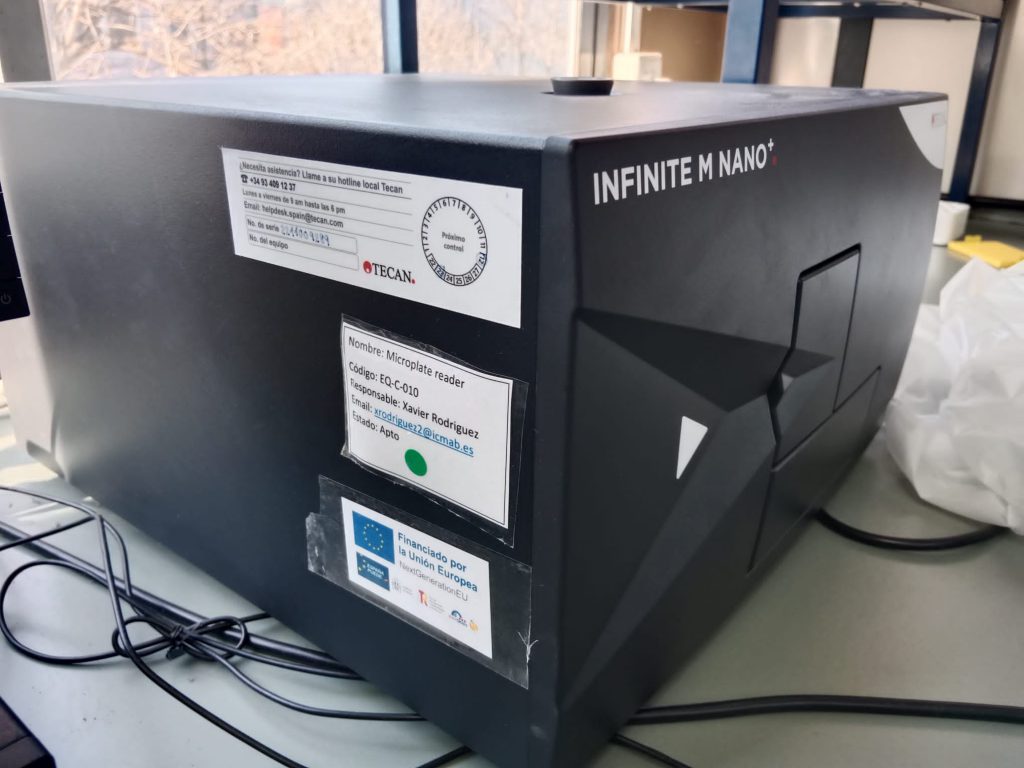Equipment funded by European Union (NextGeneratioEU) -Plan de Transfomación y Resilencia
Infinite 200 PRO M Nano+: Micropalte Reader with fluorescence module
Description:
The Infinite 200 PRO is a family of easy-to-use multimode plate readers that offer affordable and high-performance detection solutions powered by monochromator or filter-based technologies.
The Infinite M Nano+ features an optimized excitation monochromator for wavelength accuracy and precision, ensuring excellent performance for each absorbance and fluorescence assay. Designed for absorbance and fluorescence measurements, the system’s high-sensitivity Quad4 Monochromators™ minimize stray light, offering exceptional flexibility with sensitivity levels close to filter-based instruments of similar price range.
Technical Specifications:
Intuitive workflow-oriented software (i-control) that allows you to create a workflow for each application, using “drag and drop” processing steps to generate your assay protocol, which can be saved for future use.
Highlights:
- Real-time data export
- Expanded dynamic range
- Automated Z-focus
Source: High-energy xenon flash lamp, lifespan: 108 flashes
Detectors:
- Absorbance: Silicon photodiode
- Fluorescence: Spectrally enhanced PMT: Red-sensitive PMT
Sample:
- Microplates: From 6-well plates to 384-well plates.
- Temperature control: From 5 °C above ambient temperature to 42 °C
- Plate shaking: Linear and orbital shaking, selectable amplitude from 1 to 6 mm in 0.5 mm steps.
- Fluorescence wavelength range: Excitation: 230-850 nm. Emission: 280-850 nm.
- Absorbance wavelength range: 230-1000 nm
Applications:
- DNA/RNA quantification based on absorbance and purity controls
- DNA/RNA quantification based on fluorescence (PicoGreen, RiboGreen®)
- Protein quantification based on absorbance (BCA, Bradford, Lowry, etc.)
- Protein quantification based on fluorescence (e.g., NanoOrange®)
- Absorbance and fluorescence-based ELISA
- Growth curves at 600 nm (bacteria, yeast)
- Enzymatic kinetics
- Compound characterization


